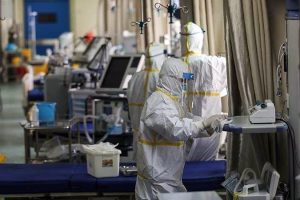By Kyle Aristophere T. Atienza, Reporter
SINGAPORE — The creation of a disease control and prevention center in the Philippines would boost the country’s integration into global health surveillance systems, which the Southeast Asian nation needs as it welcomes more foreign tourists and sees increased migration, according to a United Nations (UN) official.
Various Centers for Disease Control (CDC) across the world coordinate on disease circulation, allowing them to come up with data-driven responses in the face of emerging diseases, Basil Rodriques, health advisor at the United Nations Children’s Fund (UNICEF) East Asia and Pacific Regional Office, told BusinessWorld on the sidelines of the Philanthropy Asia Summit last week.
“It’s an important factor for many countries,” he said. “It is a point of first surveillance, analysis of pathogens in circulation. It’s normally a reputable source of information on which the government can rely.”
The Philippines had 5.45 million tourist arrivals in 2023, higher than its 4.8-million target. Of the total, 92% were foreigners and the rest were overseas Filipinos, according to the Tourism department.
A bill that seeks to create a CDC in the Philippines is among the priority measures targeted for ratification by both Houses of Congress by June. The House of Representatives passed its version of the bill in 2022.
Mr. Rodriques said the country should boost coordination with its neighbors as people in the region have become more mobile.
“And because half of us don’t know or respect borders, cooperation and coordination is really important,” he said. “Understanding where diseases originate is an early warning system for countries.”
In the face of a climate emergency, Mr. Rodriques said experts have seen a shift in the patterns of diseases, particularly dengue, chikungunya and malaria, which both the government and private sector should address.
“We’re seeing different diseases now,” he said. “That’s due to a combination of changing patterns of weather or cycles of disasters. The issue of preparedness is really, really critical.”
“Increased surveillance of diseases and sharing of information can help us understand how patterns are changing. And these can drive decisions on whether there should be policy changes,” he added.
The UNICEF health expert also urged the Philippine government to address vaccination issues, including inaccessibility and hesitancy among Filipinos, by coming up with data-based solutions.
“It’s important to identify the specific causes of hesitancy in different locales. There is no general response.”
He noted that people’s increased access to unvetted information on social media is driving vaccine hesitancy in many countries.
“It’s hard to understand why people choose not to,” Mr. Rodriques said. “The other is that when people don’t see specific diseases, they’re not necessarily afraid. That lack of awareness or sense of urgency also drives people to maybe delay getting vaccinated.”
“Delay is not the same as denial. And if delays happen too frequently, you get a buildup of individuals who simply don’t have immune protection,” he added.
The Philippines is not “doing great” in terms of vaccination, being the fifth country in the world with the biggest number of under- and unvaccinated children, UNICEF said in an e-mail to BusinessWorld.
It said there’s a measles outbreak in the Southeast Asian nation that is being addressed with a mass vaccination campaign.
UNICEF noted that in the Bangsamoro region in southern Philippines, about 1.3 million children need protection from the highly infectious measles.
Health Secretary Teodoro J. Herbosa this month said the Bangsamoro region had a measles outbreak because it only had a 50% vaccine coverage for measles and rubella.
The region’s Health ministry and the Department of Health (DoH) held a measles immunization drive from April 1 to 12, and as of April 10, more than 640,000 kids had been vaccinated against measles-rubella out of 1.38 million children.
The DoH said last month 77% of confirmed measles cases in the Philippines were from the Bangsamoro region.
In a statement on April 19, the Health department said the measles outbreak in Bangsamoro and the pertussis outbreak on the main island of Luzon and in central Philippines “entail that more work needs to be done.”
“The whole issue of immunization, vaccination, is not a one-off event,” Mr. Rodriques said. “It’s constant. It’s every year because babies are born every day. Populations move around.”
“Is there sufficient information about where populations live? Is there enough information about surveillance to understand what diseases are in circulation?”
